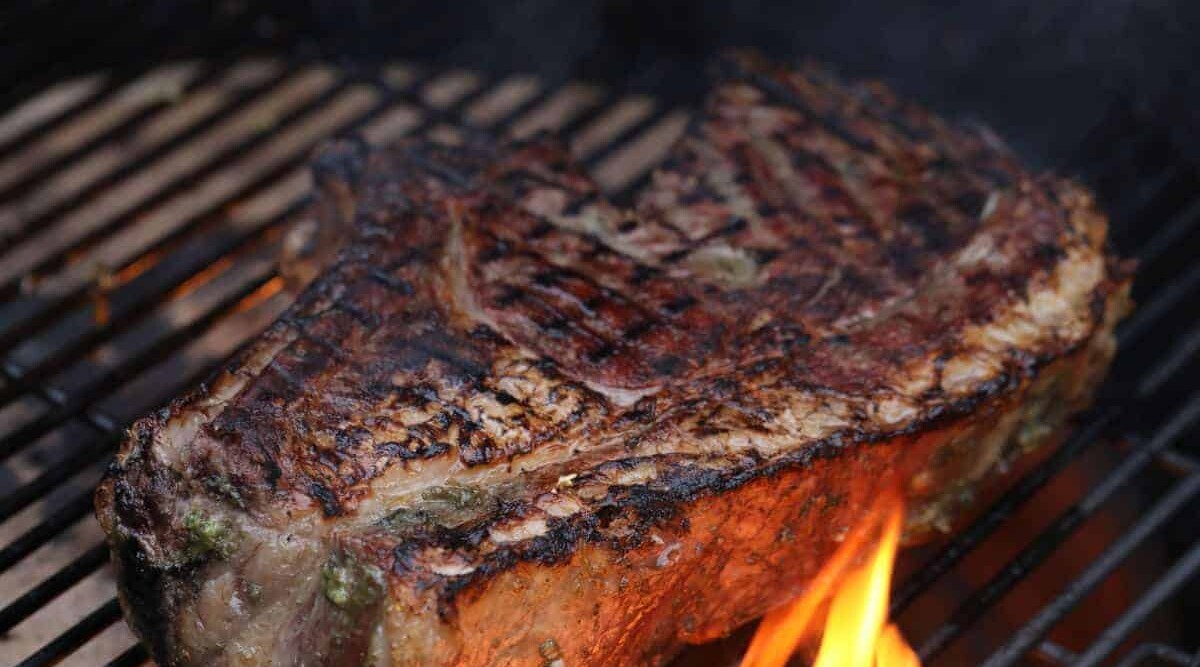
Even avid grillers like you and me have occasionally been caught staring at the meat counter at the market, befuddled by the many options, names, types and cuts of steak.
And you haven’t even got it to the grill yet! There, you’re faced with another boatload of choices from which cooking technique and what temperature, to how thick and for how long? Only high school calculus is more complicated than this!
And let’s face it, the consequences of cooking the wrong cut the wrong way the wrong temperature for the wrong time? Misery in the form of dried up old shoe leather on your plate.
I’ll be the first to admit I’ve been there more times than I care to remember.
That’s why I decided to knuckle down, and bone up on all the many terms, cuts and cooking times, to learn how long to grill steak. Every type and any size of steak.
You now have the benefit of sitting there comfortably with your feet up, sipping a nice cold drink, and reading at your leisure all my in-depth research!
I’ve made it easy for you with simple diagrams and charts. This is your go-to post for a comprehensive explanation of all the different types of steak, advice on cooking times, thicknesses, techniques and more. So go get that cold drink, and read on!
Jump to:
- 1 Different Technique for Different Thickness!
- 2 What’s Your Beef? A Rundown on All the Different Types of Steak
- 3 A Guide To Beef Cuts with Steak and Roast Names
- 4 How Long to Grill Steak — Any Cut, Any Thickness
- 5 How to Tell When a Steak is Perfectly Done: Meat Thermometers and the Hand Test
- 6 A Word about Salt & Pepper
- 7 Wrap-Up of Pro Tips for the Perfect Steak:
- 8 It’s a Meaty Subject
Different Technique for Different Thickness!
It doesn’t matter how great a steak you have, cook it the wrong way over the wrong heat, and it will be ruined.
The best thickness for steak is 1.5 inches, but you can find them at thicknesses anywhere between half an inch, up to 3 inches or more!
So let’s talk about the thickness of a steak and how this will determine how long the steak cooks for and what cooking method to use. This is simple:
Steaks Under 1 Inch Thick
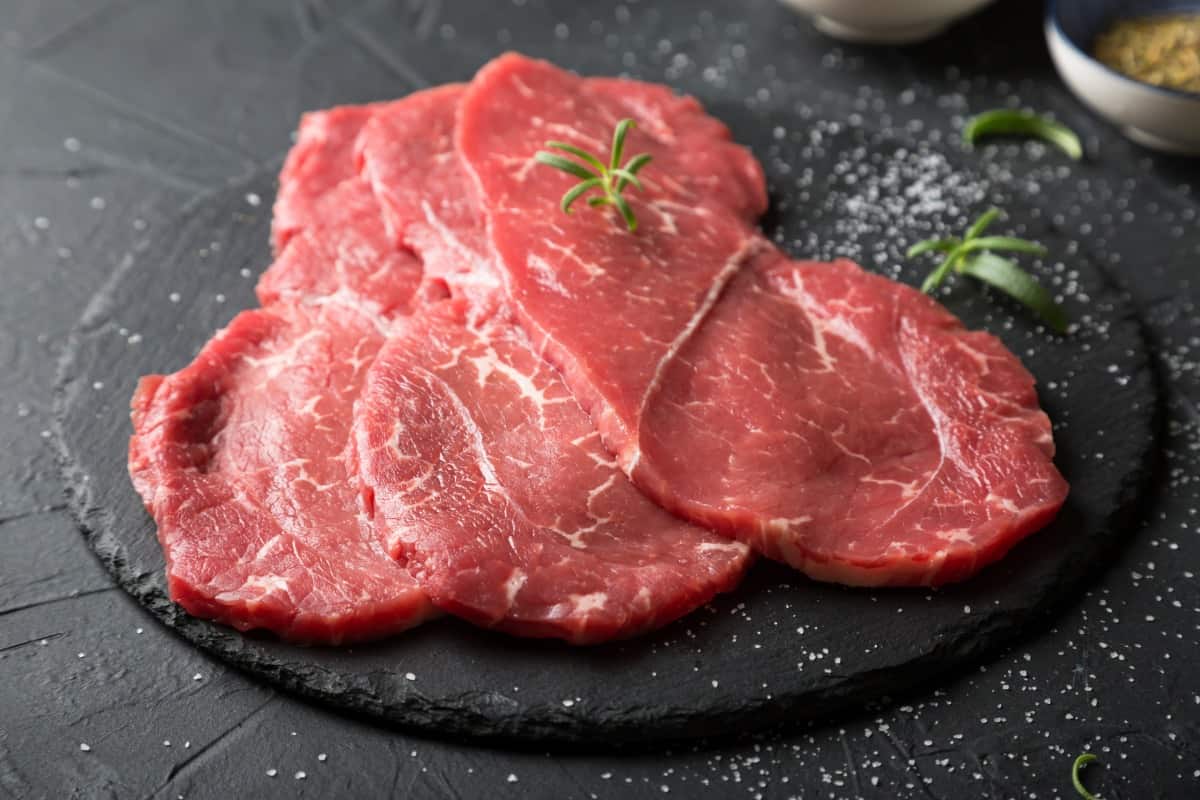
Pitmaster, Meathead Goldwyn, came up with an awesome technique: the afterburner grilling method which he calls “extreme.” I guess it’s fair to say that anything resembling the afterburner of a jet engine is extreme!
This is about as hot as it gets short of actually throwing the meat into the fire. We’re talking intense.
How To
With this method, you take the charcoal chimney that you would usually use to light a charcoal grill, light it up good and hot with coals on the inside and paper underneath, put a grill on top and cook these thin steaks over the chimney for about 2-3 minutes each side. Super hot. Super fast.
The only drawback with this method is you cannot cook many steaks at the same time because your cooking surface is only as big as the opening of the chimney.
Check out this short video for an excellent introduction to the afterburner method of cooking steaks.
Steaks 1-1 ½ Inch Thick
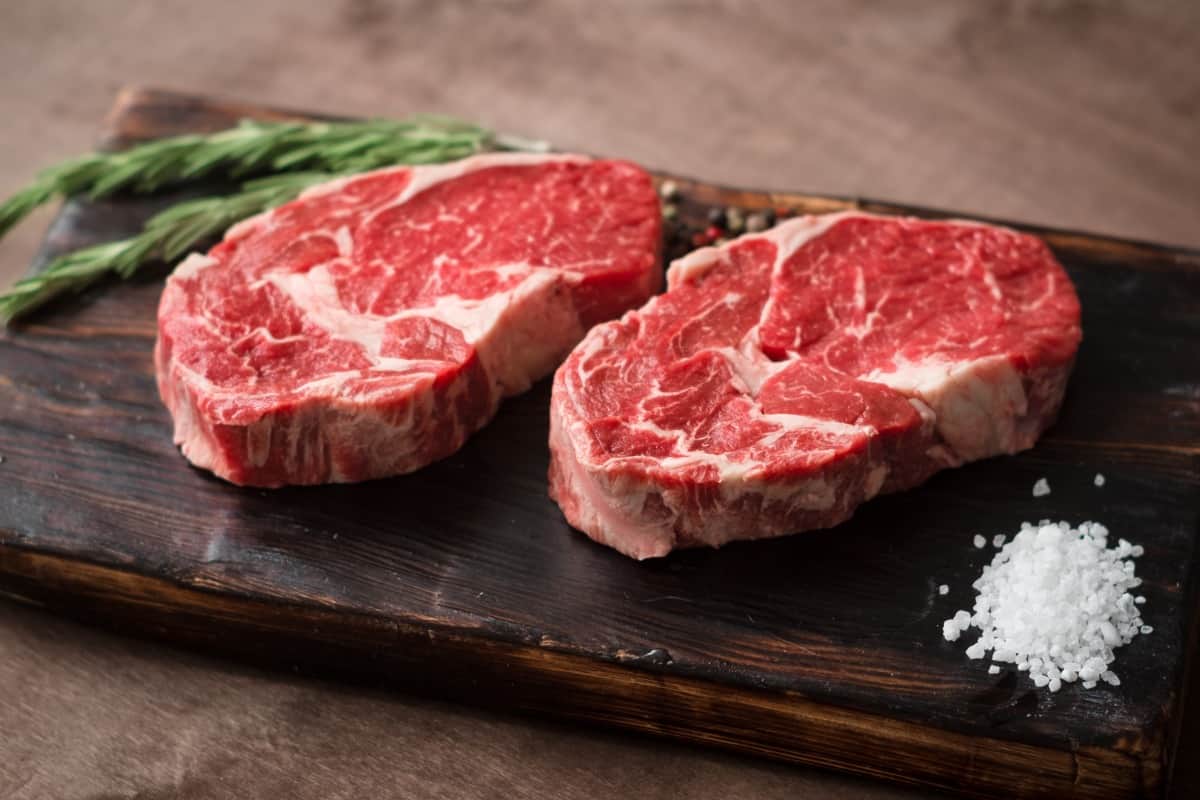
We’re back at the regular grill for these steaks, but keeping that singe-your-eyebrows heat.
You want to sear the outside quickly to a gorgeous dark mahogany with grill marks, but still keep the middle somewhat tender and pink. No gray meat please unless you want to give your jawbone a workout.
How To
Crank your gas or charcoal grill to the highest heat possible. Add the seasoned steaks, turning them a ¼ turn after a minute for pro grill marks, then flip and do the same. Take them off the grill and let rest 2 or 3 minutes.
Steaks 1 1/2 Inch and Thicker
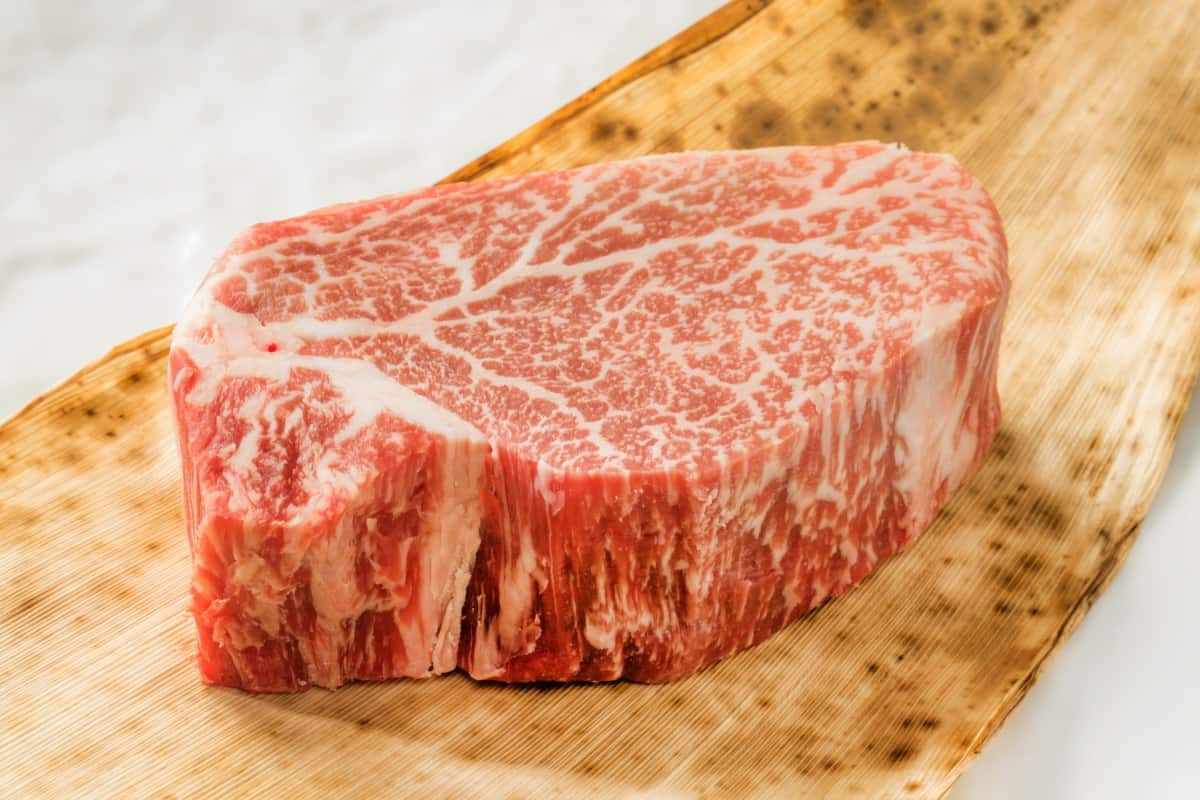
Quick cooking will not work for these mighty steaks. But you still want that dark tasty bark. So the trick is to use a combination of high and low heat.
How To
Crank the grill to highest heat and sear both sides fast, as with thinner steaks. Then turn off the heat that is directly under the meat so that the steaks can cook to doneness more slowly — without burning or overcooking — over indirect heat.
You can reverse this process if you wish using the “reverse sear technique” whereby a thicker steak is cooked slowly over indirect heat, then seared on high heat towards the end of cooking to achieve the grill marks and caramelized crust we all live for.
With these thick steaks, you want to use a reliable meat thermometer so that you can be sure to cook to a safe internal temperature.
What’s Your Beef? A Rundown on All the Different Types of Steak
The good news is there are many names for the same cut. This is part of the confusion. But when you realize that in fact a Delmonico steak is the same as a strip steak, the long list of names is less daunting.
Let’s start with one cow and work our way to the grill. The cow is divided into eight primal cuts: chuck, rib, short loin, sirloin, round, shank & brisket, plate and flank. Of these, all but the shank & brisket cut can be butchered further into different roast and steak cuts.
As we know, not all steaks are equal, with some steaks better for grilling than others. And an easy way to remember which cuts will be tender and which tough is to think about what a cow does all day. It eats. It walks. And yup, that’s about it!
So, starting with the middle back where the muscles get no workout at all, these are your tender cuts: rib, sirloin, tenderloin. Move outwards and down to the working and moving parts of the animal and the meat will be leaner, muscled and tough: shank, chuck, brisket, round.
Now there are great ways to make all these cuts successful on the grill, but you need to know which method to use.
A Guide To Beef Cuts with Steak and Roast Names
If you follow this link, you’ll find a great chart that shows which steaks come from which primal cut, plus the multiple names by which each steak is known.
So you can see what looks like 71 different steak types (far right column) is actually just 20 (under column “steak name”).
That’s still plenty to keep us busy, so let’s take a closer look at how to cook these steaks, what thickness is best for each and which grill method.
And remember, these are just my guidelines to get you going. There is more than one way to skin a cat.
Grilling is an art that take patience and practice, and you need to experiment to find what best suits your grill and your taste. And when I say experiment, I mean just keep throwing steaks on the grill ‘til you get it just the way you like it. Now that’s a pretty sweet order!
Use this handy quick-reference chart for checking the type, cook time, temperature and optimal thickness of all the main cuts of steak. I have this cut out and taped inside a kitchen cabinet door!
How Long to Grill Steak — Any Cut, Any Thickness
| Primal cut | About: | Best grill method: | Ideal thickness: | Cook time/Internal temperature: |
|---|---|---|---|---|
| Chuck. E.g. English steak, long broil, arm Swiss steak | This great budget cut is lean and tough, but very flavorful. With careful tenderizing and marinating, it will be totally delicious. | High heat in order to sear, followed by indirect heat to finish. | 2” or more | 5 minutes per side on high heat, then 5–8 minutes over indirect heat. 125 °F for medium rare, 135 °F for medium. These steaks will be tough if cooked much longer |
| Rib. E.g. ribeye, Delmonico, beauty | Delicious tender cut. Look for bright color and good marbling | High direct heat | 1 1/4” | 4–5 minutes per side, then check the internal temperature. If not quite at 125 °F (medium rare) turn off grill and leave steaks on covered grill for a couple more minutes |
| Short loin. E.g. T-bone, filet mignon, Châteaubriand, porterhouse | The king of steak cuts, this much-prized cut yields the best (and most pricey!) steaks out there. Melt-in-the-mouth results with short grill time. | High direct heat | 1 1/2” | 4 minutes per side, for medium-rare (125 °F) rotating once halfway through for pro grill marks! Add a couple more minutes for medium (135 °F) and a couple more for well done (140 °F) |
| Sirloin. E.g. Santa Maria, strip loin, flap, pin-bone, tri-tip | A slightly leaner cut that nevertheless grills up great. Be sure not to overcook to toughness | High direct heat | 1 1/2” | 4 minutes per side, for medium-rare (125 °F). Add a couple more minutes for medium (135 °F) and a couple more for well done (140 °F) |
| Round. E.g. sandwich, minute, round tip | A lean, budget but full-flavored cut from the working end of the animal! Marinate first to tenderize. | Very brief high heat | 1” | 3 minutes per side to medium rare (125 °F). Add a pat of butter on top to finish, to boost flavor and fat. |
| Plate & Flank. E.g. Skirt, hanger, flank, jiffy | Flavorful steaks from the lean muscled primal cut. Marinate long and grill fast! | Afterburner | 3/4” | 3 minutes per side to medium rare (125 °F). Rest well. Always slice thinly across the grain to break down tough fibers |
We didn’t include ‘blue’ in the above table, as it’s a beast all of its own. Check out this guide for a deep dive look into blue cooked steak.
How to Tell When a Steak is Perfectly Done: Meat Thermometers and the Hand Test
Experts agree that using a good meat thermometer is always the right thing to do when it comes to checking for steak doneness levels.
OK, with your super-thin steaks, fine, you get a pass, but with everything else, a good meat thermometer is the only reliable way to ensure perfect …and safe…results every time.
Click here to read why it is so important to use a meat thermometer if you don’t already know.
You can also get an instant-read, albeit an inexact one, from the hand test.
Here’s how it works: When you think you’re close to show-time, prod the steak gently with a clean finger and compare to the feel of your own hand as follows:
| If the steak feels like the soft pad below your thumb when: | |
|---|---|
| Your pointer finger and thumb are touching | It's medium rare |
| Your middle finger and thumb are touching | It's medium |
| Your ring finger and thumb are touching | It's medium-well done |
| Your pinky finger and thumb are touching | It's well done |
Now obviously you can also cut into a steak, and see with your own eyes whether it’s done. But you want to minimize how many times you do this as you’ll be letting precious juices escape with every cut.
In the end, after I’ve gone through all my sensory tests (touching, smelling, looking etc), I still turn to my thermometer for the final confirmation of readiness!
A Word about Salt & Pepper
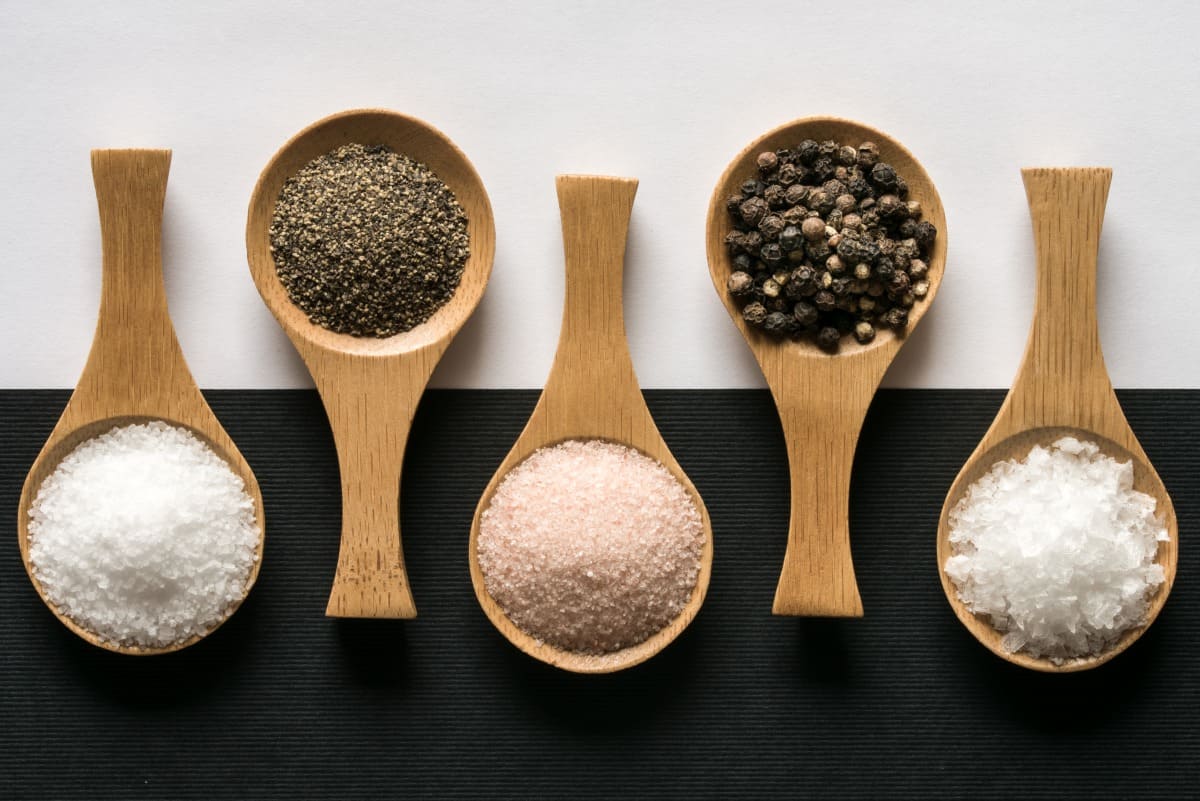
S&P. Those humble everyday countertop seasonings. So commonplace and yet so important!
Salt
When seasoning steak, you want to use coarse or kosher salt, because the larger crystals will create a beautiful crunchy crust. Fine table salt can be too readily absorbed and end up over-salting the meat. And don’t be shy! Think of the thickness of the meat you’re grilling. That surface salt needs to penetrate the whole steak in order to season it thoroughly. You can afford to be liberal here.
Now you have a choice of when to salt steak prior to grilling: either right before the meat hits the grill for straightforward seasoning, or an hour to two hours before to tenderize the steak.
What happens here is that the sitting salt will draw moisture out of the meat (remember 7th grade osmosis?!) which will then dissolve the salt and the newly-created brine will in turn be reabsorbed into the meat, thereby tenderizing and seasoning it more deeply. Clever stuff, and a great option for slightly tougher cuts.
Pepper
A good dose of cracked pepper works well with most steaks although if you are planning on searing with extremely high heat (such the afterburner method, or at 500 °F on your grill), you’ll want to leave seasoning with pepper until after cooking.
This is because pepper at very high temperatures will carbonize and give a bitter flavor, potentially spoiling your beautiful steak!
Wrap-Up of Pro Tips for the Perfect Steak:
- Remove steaks from the refrigerator 30 minutes before grilling to allow to come to room temperature. Make sure the steak is good and safe and to eat. Check out our guide on how to tell if steak is bad for details.
- Always marinate and tenderize tougher cuts before grilling.
- Always use a thermometer inserted horizontally to check for final temp, to ensure reaching the thickest part of the meat. And don’t let it touch any bones!
- If using a marinade, always pat meat dry with paper towels before taking it to the grill. Wet and heat make steam, no good for fiery grilling!
- Remember to remove meat from direct heat to indirect or resting off grill just before it reaches ideal serving temperature. Meat continues to cook after it’s off the flames, and its temperature will continue to rise another 5-10 degrees. So remove it 5 degrees lower than your target temp.
- Always allow steak to rest 5-10 minutes after grilling (under loosely tented foil is good to keep warm) to allow juices to redistribute throughout the steak, making the result more tender and juicy
It’s a Meaty Subject
Ask five chefs how to grill the same steak, and you’ll get five different answers! That’s really the beauty of it. There is no one right or wrong way. And finding your own way is part of the tasty fun.
That said, I hope you’ve found my guidelines on temperature, cooking time, and types of steak useful. And the “pro-tips” are handy reminders no matter what kind of meat you’re grilling.
Remember too, that if you still find yourself standing like a deer in the headlights at the meat counter, you can always ask the butcher for advice. But it’s even better to know it yourself!
What methods of grilling do you enjoy? Did you try something new? We always love to hear about our readers’ experiences with meat and fire.
Thanks for stopping by, and please share this post with the wider meat-loving community!


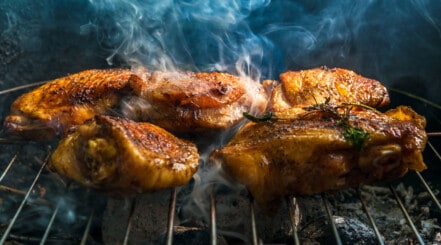
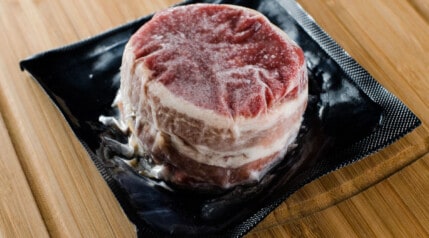
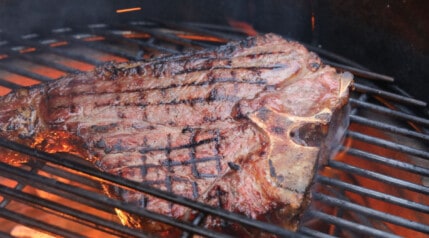
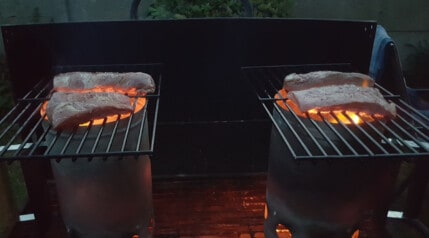
0 Comments